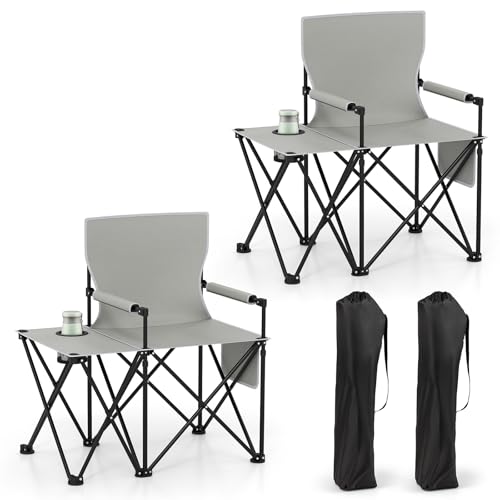Until now, we had to rely on food, bought from a store and only the type that would stay fresh for days, to take to camping. But now, with dehydrators available in the market, we opt for sending the delicious food we love through the dehydration process and put it in our backpacks. If you have not done that before and want to learn how to dehydrate food for camping or are looking for some tips to do it like a pro, you are at the right place.
Yeast, mold, and bacteria thrive in moist conditions. Dehydrators use steady airflow and low heat to remove 80% to 95% of moisture from various fruits and vegetables and 50% to 70% from various meats through evaporation. By using an electric food dehydrator, you can lower the cost of your food, lower the weight of the food, diversify your meal options, and control your nutritional profile. Let us jump on to how to dehydrate food for camping:
What You’ll Need
To dehydrate food for camping, you will need to perform some pretreating. We will assume you have various kinds of meat, fruits, vegetables, legumes, beans, and pasta, so we will go over the dehydration process for each of them. Here is a list of things you will require throughout the process:
- A mandoline (you can also use an egg slicer for small items)
- A knife
- Ascorbic acid (you can use fruit juice of fruits that are high in citric acids, such as lemon and oranges, etc., as well)
- Boiling water
- Coldwater
- Bowls (the number depends on your items)
- And of course, an electric food dehydrator
Make sure to clean your hands, all equipment, and surfaces, and dry them before you start the process.
How to Dehydrate Food for Camping in 4 Steps
Step 1: Cut Into Small, Even Pieces
You can leave the items, such as peas, legumes, pasta, and corns, etc., that are small and uniform in size, as they are. But you need to cut larger fruits, vegetables, and meat into small and evenly-sized pieces to ensure even drying. Mandoline works best for vegetables and fruits, while you can use a knife for cutting meat.
Step 2: Pretreat the Fruits
Pretreating is not required but is a good idea for retaining flavor and color and increasing the shelf life of vegetables and fruits. Ascorbic acid contains Vitamin C, which keeps the fruits from going brown. Take two cups of water in a bowl and add one teaspoon of powdered ascorbic acid into it. Put the fruits (separately) into the mixture and let them soak for five minutes. Drain the water and repeat the process for the next batch of a different type of fruit. Do not use the same solution for more than two batches. You can use fruit juice of any fruit that is high in citric acid instead of ascorbic acid, but it will most likely alter the taste of your fruits.
Step 3: Pretreat the Vegetables
To reduce the rehydration time of vegetables (generally those that you would not eat raw) and retain their flavor and color, either steam or blanch your vegetables. Put your vegetables (separately) into hot boiling water, take them out and instantly put them in cold water. Drain the water and repeat the process for the different kinds of vegetables. Soft vegetables like Zucchini, okra, onions, celery, mushrooms, kale, and spinach do not need to go through steaming or blanching.
Step 4: How to Dehydrate Food for Camping
Vegetables
The cut pieces of vegetables should be small and not more than 1/8 inch thick if you are slicing them. You can also use frozen vegetables. Spread the vegetables onto the trays of your electric food dehydrator and set the temperature to 125° F., and let them get processed until they are hard or crisp. This will require monitoring after around every one hour as the time required can vary from between 4 to 12 hours. The humidity in your house, dehydrator load, size of the pieces, vegetable type, and the type of dehydrator all have an impact on the time the process takes. If you go for a higher temperature, your vegetables can get scorched.
Fruits
While spreading the fruits on the dehydrator trays, make sure you do not overlap them. Set the dehydrator at 135° F. and wait for the fruits to become leathery and non-sticky. A good way to check each different kind of fruit for its readiness is to cut one or two sample pieces in half and squeeze them to see if any moisture comes out. If it does, it needs more time. Fruits require more time to dehydrate than vegetables; berries and cherries can take multiple days.
Rice and Grains
Dehydrate cooked grains and rice at 145° F. until they are hard and completely dried. A type of bacteria, B. cereus, thrives on rice that is cooked at a temperature lower than 135° F. and can cause food poisoning.
Lentils and Beans
Canned lentils and beans work as well as pressure-cooked ones. Make sure to cook them until they are tender. Place them in the dehydrator and set it at 125° F. Allow them to dehydrate until they are crunchy or hard. This can take between 6 and 12 hours.
Pasta
Cook the pasta as you do and try not to overlap it while setting it on the trays. Dehydrate at 135° F. for 6 to 12 hours until they are brittle and hard. Pick up a piece and snap it to check the progress.
Meat
Ground beef, chicken, and turkey all follow the same dehydration process. You can cook them with ground oats, dried spices, or breadcrumbs for better rehydration. Spread the meat on the mesh dehydrator trays and let it work at 145° F. for 6 to 12 hours until it is completely dry. Whenever you see liquid fat surfacing on the meat, you should absorb it with a paper towel to make the process quicker.
Our Final Thoughts
All camping enthusiasts should know how to dehydrate food for camping. Electric dehydrators have made the process easy, but setting the right temperatures and keeping the food from getting over or under dehydrated is important. Rotating the trays and rearranging the food every now and then during the process can speed up the process and give you better results. Remember, dairy products, uncooked meats, coconut milk, and fatty meats are not suitable to dehydrate.











